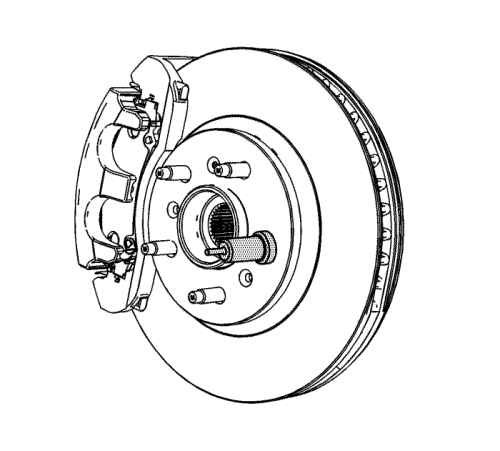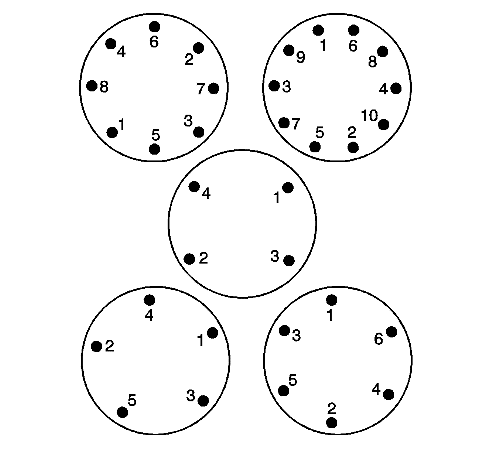Tyre and Wheel Removal and Installation
Special Tools
| • | CH 41013 Rotor Resurfacing Kit |
| • | CH 42450-A Wheel Hub Resurfacing Kit |
For equivalent regional tools, refer to Special Tools
Removal Procedure
- Raise and support the vehicle. Refer to Lifting and Jacking the Vehicle .
- Remove the wheel center cap, if equipped.
- Remove the wheel centre cap nuts, if equipped.
- Remove the wheel nuts.
- Remove the tyre and wheel assembly.
Caution: Never use heat to loosen a tight wheel bolt or nut. This can shorten the life of wheel and damage wheel bearings.
- If the tyre and wheel assembly is difficult to remove or cannot be removed, perform the following steps:
| 6.1. | Apply a small amount of penetrating oil to the wheel nuts, and the centre hub. Allow a few moments for the penetrating oil to work. |
| 6.2. | Loosen each wheel nut 2 complete turns. |
| 6.4. | Rock the vehicle from side to side. |
| 6.5. | Repeat the procedure if necessary. |
- If the tyre and wheel assembly still does not loosen, perform the following:
| 7.2. | Allow the vehicle to move forward, and quickly apply the brakes. Repeat this procedure in reverse. |
| 7.3. | Repeat this procedure if necessary. |
- With the tyre and wheel assembly loose, raise and support the vehicle.
- Remove the tyre and wheel assembly.
Caution: Before installing wheels, remove any build-up of corrosion on the wheel mounting surface by scraping and wire brushing. Installing wheels without good metal-to-metal contact at the mounting surfaces can cause wheel bolts or nuts to loosen, which can later allow a wheel bolt or nut to come off while the vehicle is moving. Wheel bolts or nuts must be tightened in sequence and to proper torque to avoid bending the wheel, brake drum or rotor.
Note:
| • | Wear approved safety glasses when performing the following service procedures. |
| • | DO NOT use power grinders to clean any of the brake rotor or brake drum to wheel contact areas. |
- Using a wire brush or wire wheel, clean the rotor to the wheel or brake drum to wheel hub contact area.
- Where possible, use the CH 41013 kit to clean the contact areas of the wheel to brake rotor or brake drum.

- Using the CH 42450-A kit, clean the surface around the wheel studs.
- Clean the threads of the wheel studs. If the threads are damaged, replace the wheel stud.
- After cleaning all the contact areas, use brake clean or denatured alcohol to remove all the penetrating oil, dirt and debris from the wheel nuts, brake rotor or brake drum.
Installation Procedure

Note: Only apply a small amount the lubricant to the pilot hole of the wheel and NOT the wheel bearing flange. DO NOT apply it to the entire pilot hole of the wheel.
- Apply a small amount of lubricant to the inner diameter of the wheel hub pilot hole (1) where it contacts the with the wheel bearing/hub flange. Refer to Adhesives, Fluids, Lubricants, and Sealers
- Install the tyre and wheel assembly.
- Hand start the wheel nuts.

Caution: Improperly tightened wheel bolts or nuts can lead to brake pulsation and rotor damage. In order to avoid expensive brake repairs, evenly tighten the wheel bolts or nuts to the proper torque specification.
- Using the proper size socket and the torque wrench, tighten the wheel nuts in the proper sequence. Refer to Fastener Tightening Specifications
- Install the wheel centre cap, if required.
- Install the wheel cap nuts, if required.
- Remove the support and lower the vehicle.
| ©© Copyright Chevrolet. All rights reserved |


